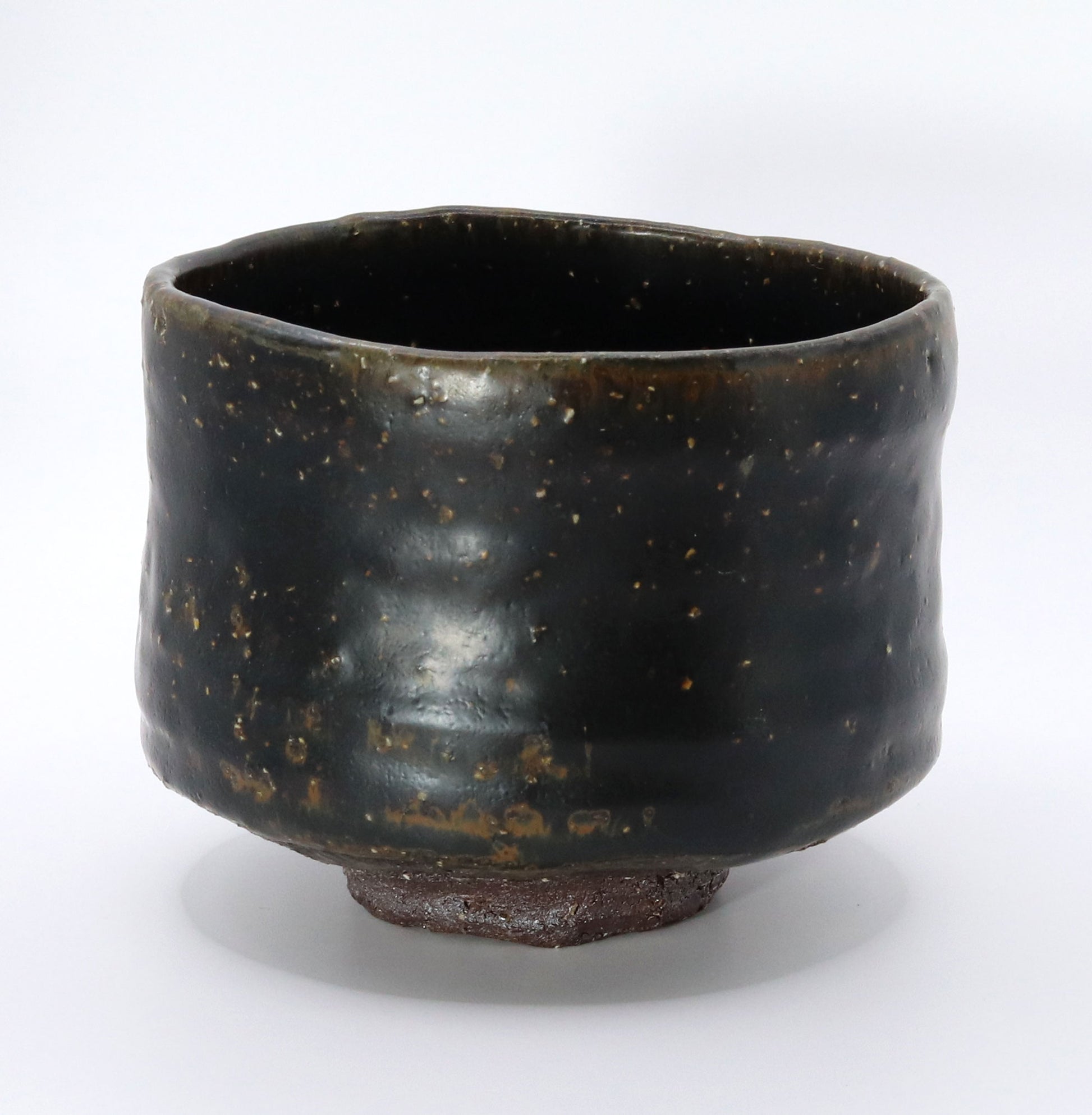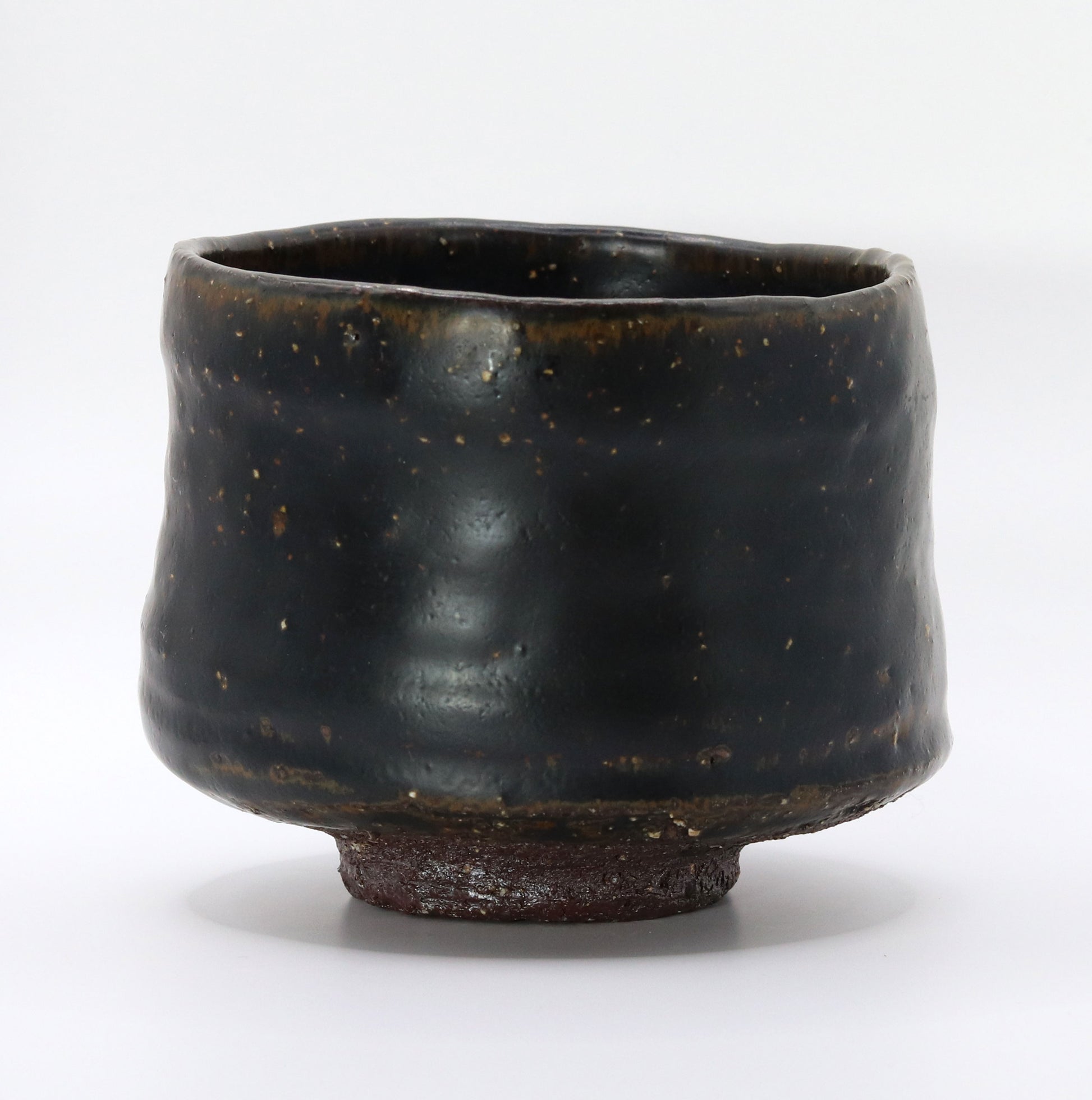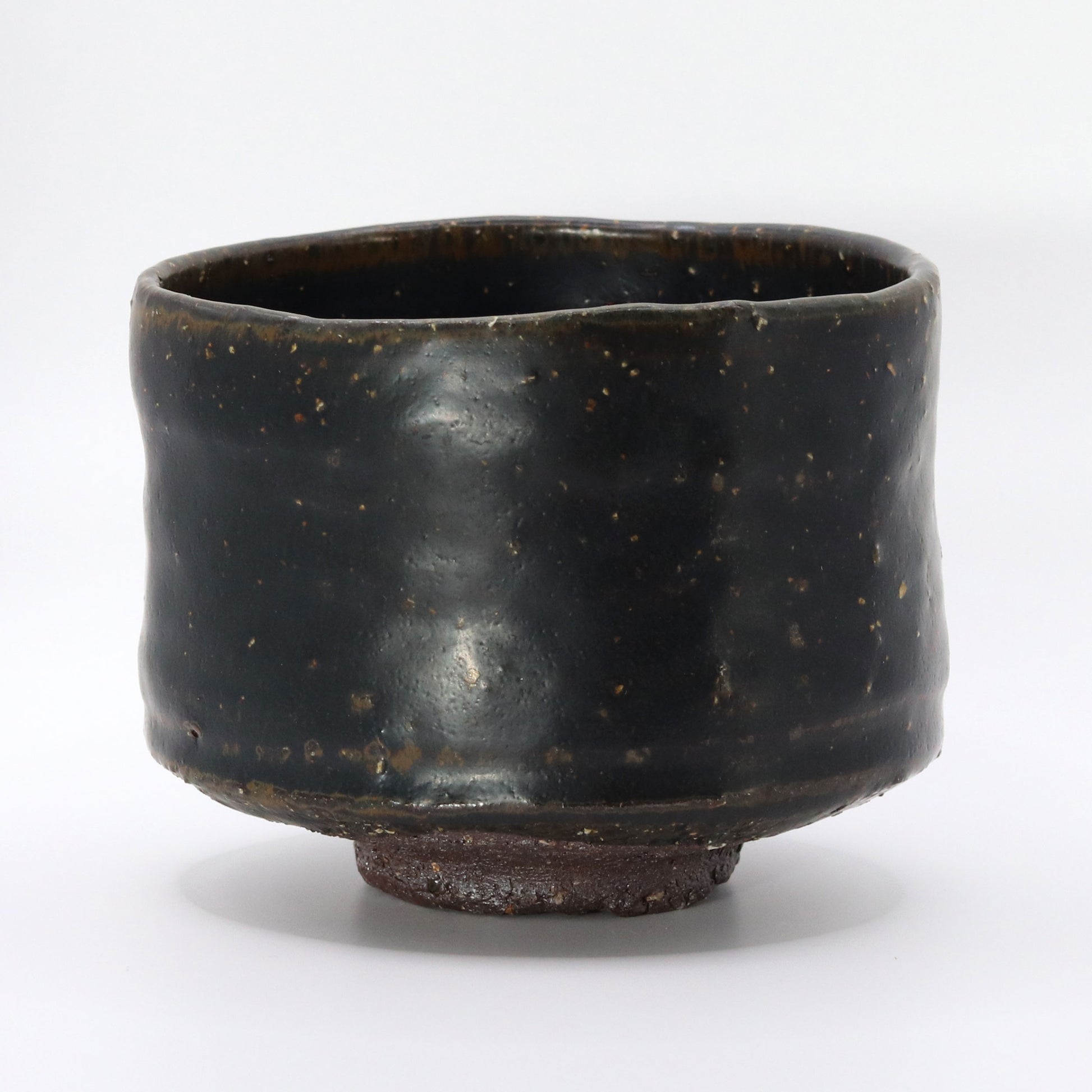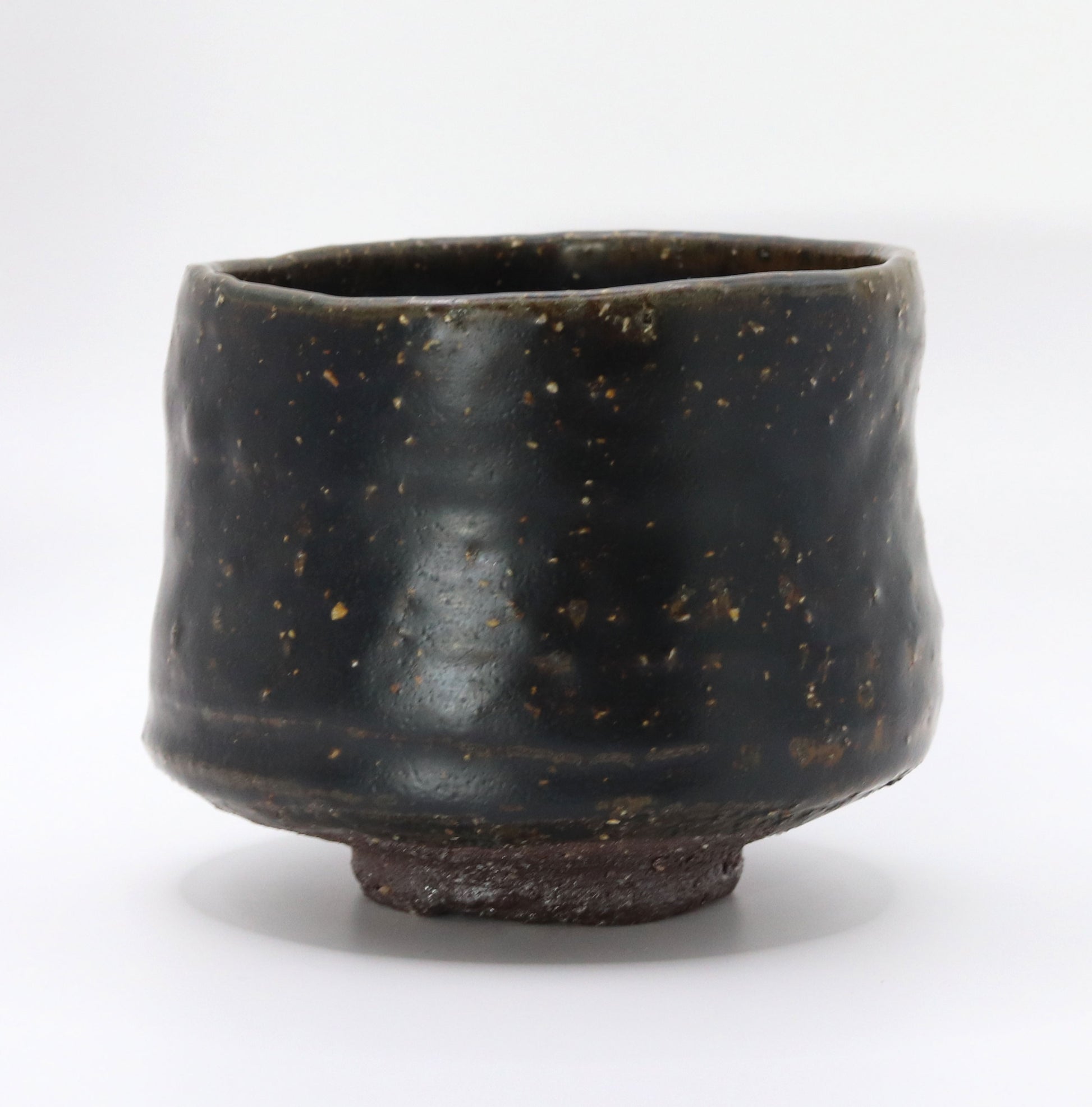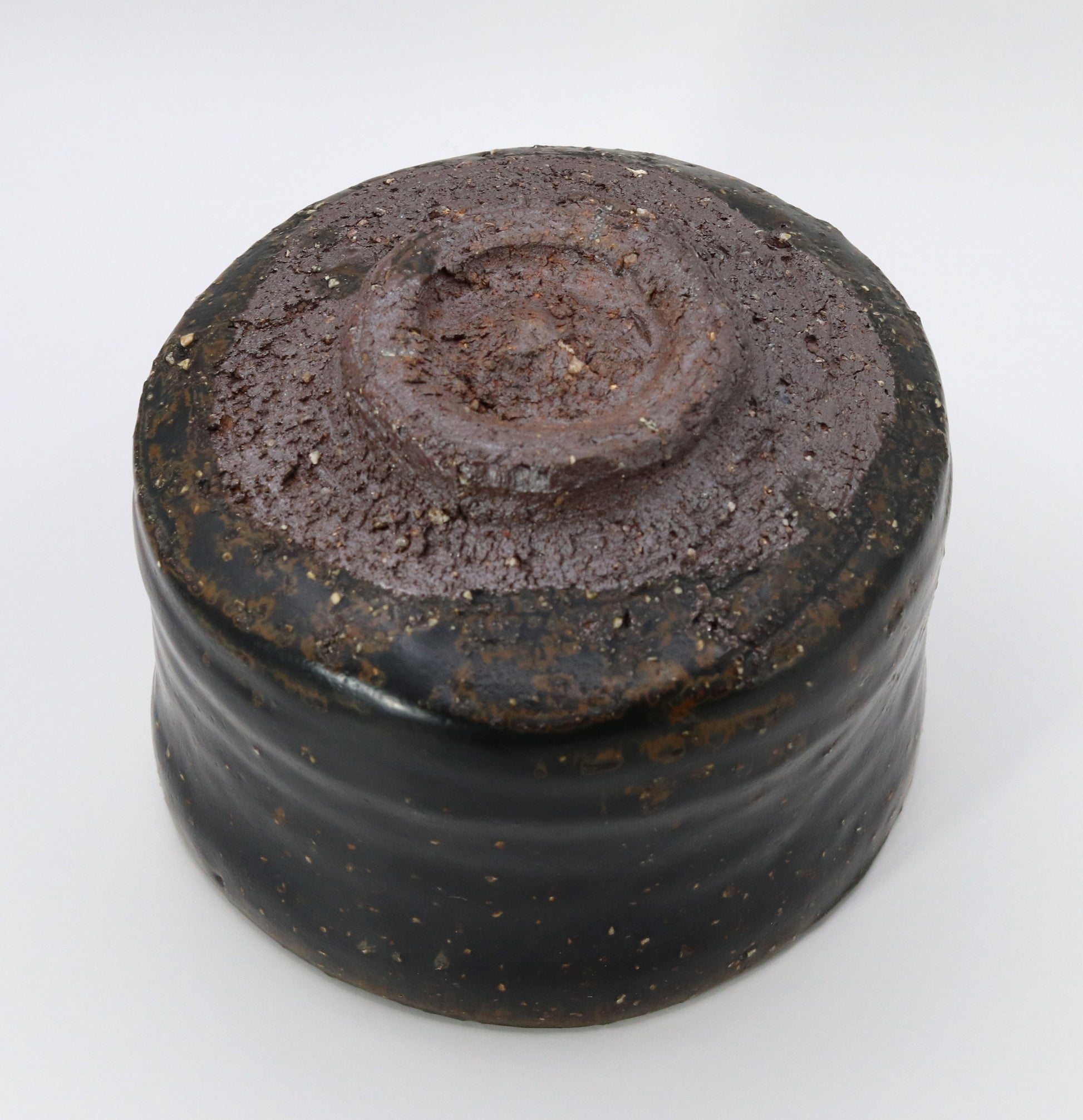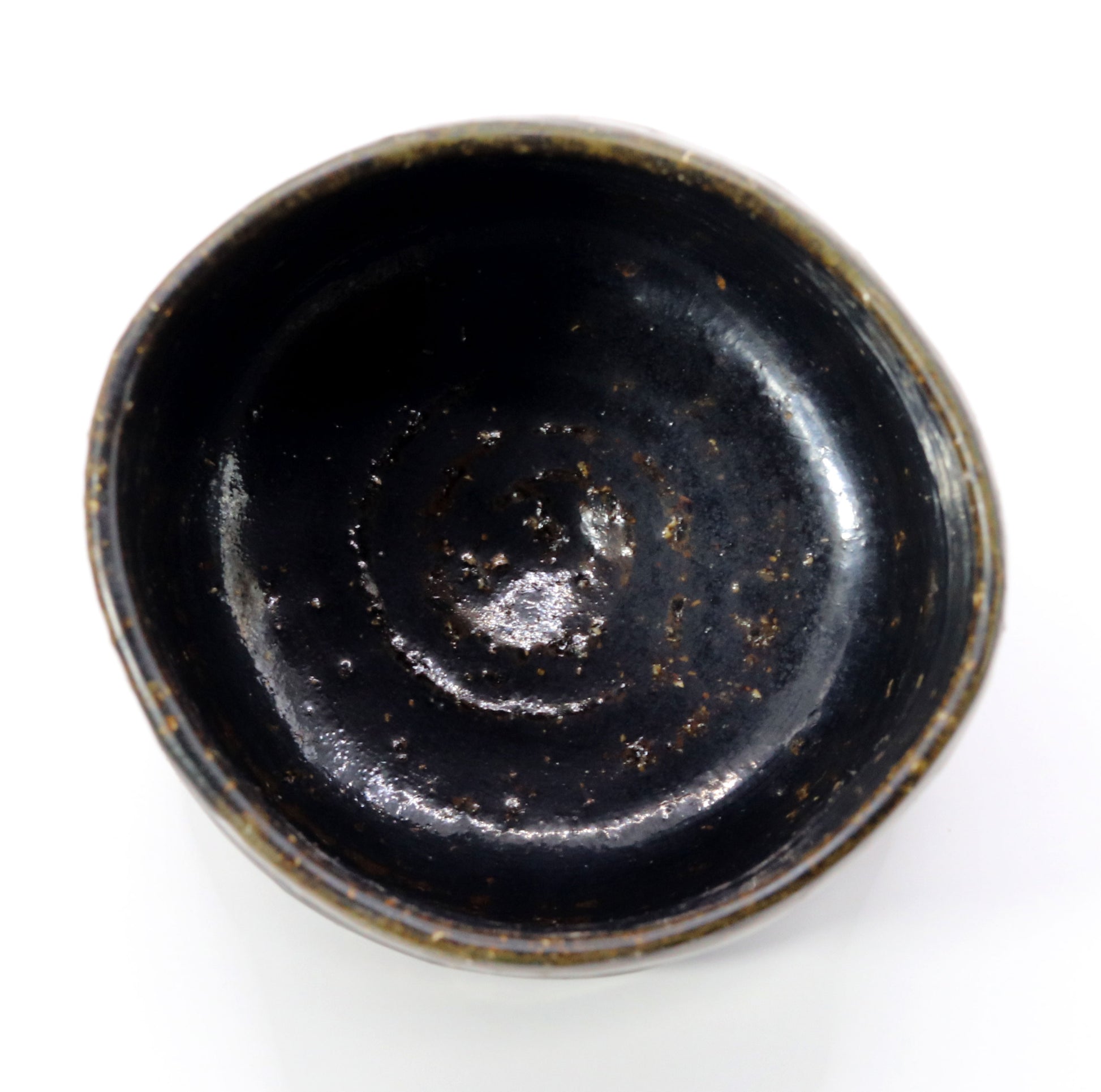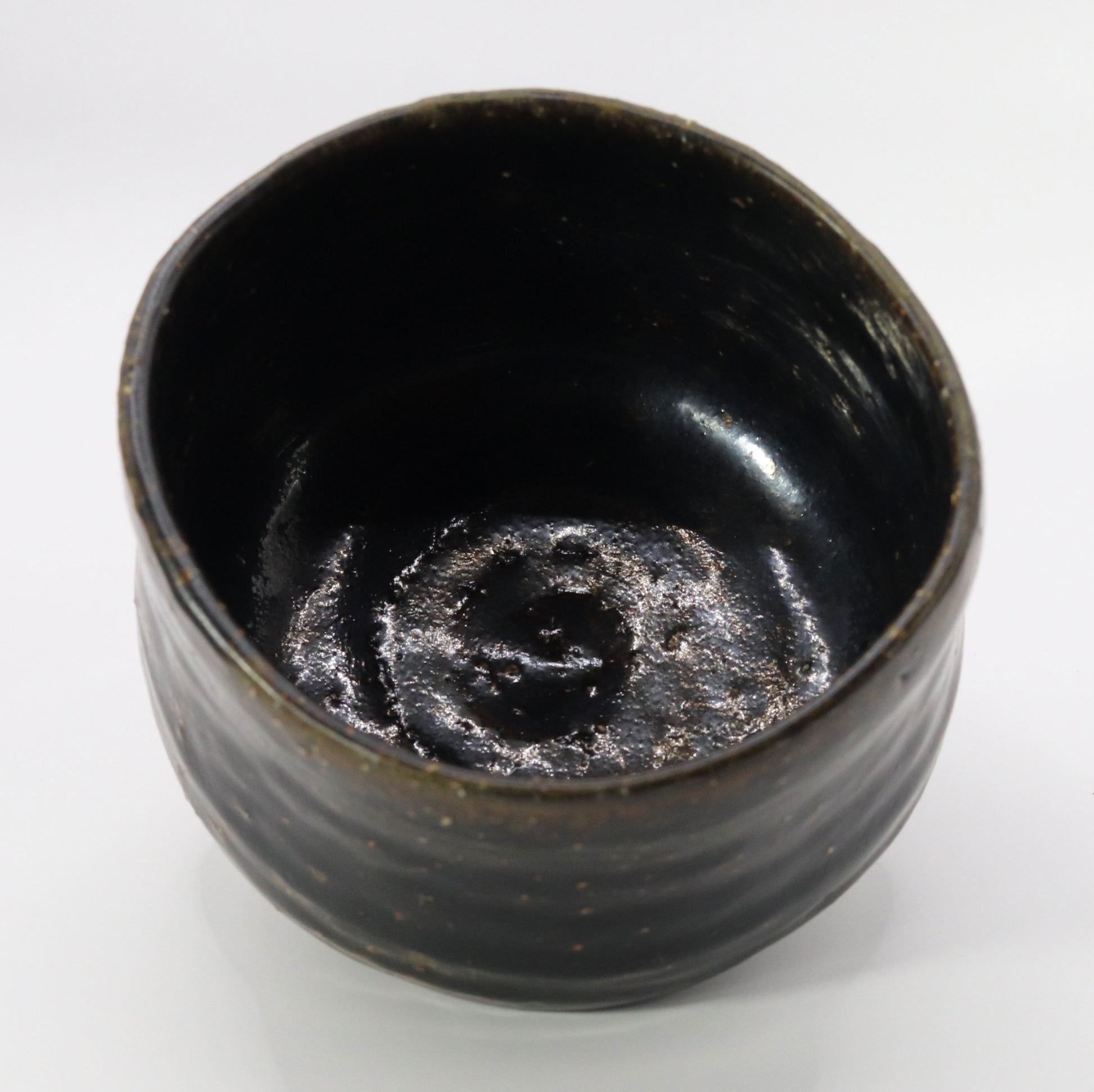Tanba black matcha tea bowl by Shinsui Ichino
Tanba black matcha tea bowl by Shinsui Ichino
Couldn't load pickup availability
Tanba black glaze tea bowl - Nobumi Ichino
The deep luster of the black glaze
The black glaze applied to this piece is a lustrous jet black created by the iron-rich soil of Tanba and the reducing flames of the climbing kiln. When light hits it, subtle greens and browns flicker within the black, softly reflecting the light of the lanterns and candles in the teahouse. The golden specks scattered on the surface of the vessel are a pattern called "sesame" that is created when ash melts during firing, and they add an appealing touch as if stardust had been sprinkled on the quiet black.
A neat design that embodies wabi
The slightly taut waist and slightly inward-curved rim create a silhouette similar to that of a cylindrical tea bowl, calculated to allow the tea to rise plumply when served. After being shaped on a potter's wheel, the bowl is gently pressed down with the fingers to create gentle irregularities that give rhythm to the body and prevent the black glaze from appearing monotonous. The rim is made with slight corners, leaving a soft, irregular shape, giving it a simple look reminiscent of Rikyu's wabi-cha tea.
The "Tamba style" created by rough soil and fire
The coarse clay peeking out from the side of the foot is the very essence of the rustic charm that can be achieved by using the granite-containing mountain soil of Tanba with almost no refining. The thick foot that was left uncarved supports the vessel firmly, increasing the stability when brewing matcha tea. The firing is carried out in a climbing kiln where firewood is continuously burned for more than three days and nights, and the flow of the flames and the falling of the ash carve a unique appearance that is different for each piece.
The skills and aesthetic sense of the second generation Ichino Shinsui
Shinsui Ichino has added his own unique sensibility to the potter's wheel techniques inherited from the founder, and has been exploring the possibilities of the "black glaze" that is rare in the old Tamba kilns. By adjusting the amount of iron and delicately controlling the firing atmosphere, he has given transparency and depth to the black glaze, which tends to be heavy, and achieved a refinement that stands out in modern tea ceremonies.
Functional beauty that stands out at tea ceremonies
Matcha color : The jet black glaze surface accentuates the vibrant green of the matcha, pleasing the eyes of your guests.
Easy to hold : The uneven surface of the bowl provides a good grip for your fingers, making it easy to lift even hot bowls.
Suitable for all seasons : The nearly cylindrical shape provides excellent heat retention, making it ideal for the hearth season. It has the capacity to be used for both light and strong tea.
For long-term use
If you rinse the teapot lightly before use, the tea stains will soak in evenly and create a beautiful finish.
After use, wash gently with lukewarm water, wipe dry with a soft cloth and dry in the shade.
The gloss of the black glaze becomes more subdued the more you use it, and the gold color of the sesame seeds becomes more prominent. The change over time is the real pleasure of this piece.
Ichino Shinsui's Tanba black glaze tea bowl is as if the twinkling of the stars were trapped in its deep jet blackness. This bowl, which combines rustic charm and elegance, will bring a quiet sense of tension and warmth to your tea ceremony, turning your daily cup of tea into a special moment. Please treasure it for many years to come, and enjoy the view of wabi that deepens with time.
History of pottery making
- 1957: Born in Tachikui, Tanba as the eldest son of the first Shinsui
- 1980: Started making pottery in Tachikui, Tamba. Selected for the Prefectural Exhibition.
- 1983: Received the Cultural Association Award at the Prefectural Crafts and Arts Exhibition
- 1984: Received the Association Award at the Prefectural Crafts and Arts Exhibition and became a member of the Prefectural Crafts and Arts Artists Association.
- 1985: Selected for the All Kansai Art Exhibition
- 1986: Selected for the Japan Crafts Association Kinki Exhibition
- 1989: Selected for the Tea Ceremony Art Exhibition, Osaka Takashimaya Two-person Exhibition, Japan Traditional Crafts Exhibition for the first time, Toyota Sogo Three-person Exhibition
- 1990: Selected for the Japan Traditional Crafts Exhibition
- 1991: Selected for the Tea Ceremony Art Exhibition, Osaka Takashimaya Two-person Exhibition, Prefectural Crafts and Arts Exhibition, Kobe Shimbun Grand Prize
- 1992: Selected for the Ikebukuro Seibu Horaikai Exhibition, the Tea Ceremony Art Exhibition, and the Japanese Traditional Crafts Exhibition
- 1993: Selected for the Tea Ceremony Art Exhibition, Selected for the Japan Traditional Crafts Exhibition, Certified as a full member of the Japan Crafts Association, Received the Kobe Shimbun Grand Prize at the Prefectural Crafts and Arts Exhibition
- 1995: Solo exhibition at Osaka Takashimaya, selected for the Tea Ceremony Art Exhibition, selected for the Japanese Traditional Crafts Exhibition
- 1996: Selected for Gallery Kurimoto solo exhibition and the Japan Traditional Crafts Exhibition
- 1997: Solo exhibition at Osaka Takashimaya, selected for the Exhibition of Tea Ceremony Art, solo exhibition at Mito Keisei Department Store, solo exhibition at Gallery Eikosha
- 1998: Solo exhibition at Gallery Kurimoto, selected for the Exhibition of Tea Ceremony Art, solo exhibition at Daikokuya, solo exhibition at Osaka Takashimaya
- 1999: Selected for the Tea Ceremony Art Exhibition, Toyoda Sogo solo exhibition
- 2000: Selected for the Tea Ceremony Art Exhibition
- 2001: Selected for the Tea Ceremony Art Exhibition, and the 16th Japan Ceramic Art Exhibition "Tanba Tea Caddy"
- 2002: Changed his name from Katsuaki to the second generation "Ichino Shinsui", was selected for the Exhibition of Tea Ceremony Forms, and held the Ichino Shinsui Succession Exhibition at Osaka Takashimaya and JR Nagoya Takashimaya
- 2003: Selected for the Tea Ceremony Art Exhibition, Japanese Ceramic Art Exhibition, Japanese Traditional Crafts Exhibition, solo exhibition at Yonago Takashimaya, Gallery Momoyama, and Kobe Daimaru
- 2004: Solo exhibition at Houeidou, solo exhibition at JR Nagoya Takashimaya
- 2005: Selected for the Tea Ceremony Art Exhibition, Selected for the Japanese Ceramic Art Exhibition, Solo Exhibition at Gallery Kurimoto, Solo Exhibition at Kyoto Takashimaya
- 2006: Solo exhibition at Yonago Takashimaya, Osaka Takashimaya, Shimonoseki Daimaru, Gallery Tsuboya
- 2007: Exhibited ceramics from Hyogo, selected for the Japan Traditional Crafts Exhibition, solo exhibition at JR Nagoya Takashimaya
- 2008: Selected for the Japan Traditional Crafts Exhibition, Gallery Kurimoto solo exhibition
- 2009: Solo exhibition at Osaka Takashimaya and Yonago Takashimaya
- 2011: Selected for the Japan Traditional Crafts Exhibition
- 2014: Selected for the Japan Traditional Crafts Kinki Exhibition
- 2015: Selected for the Japan Traditional Crafts Kinki Exhibition and the Japan Traditional Crafts Exhibition
- 2016: Selected for the Japan Traditional Crafts Kinki Exhibition and the Japan Traditional Crafts Exhibition
- 2017: Selected for the Japan Traditional Crafts Exhibition
- 2018: Selected for the Japan Traditional Crafts Exhibition
- Reiwa 4: Selected for the Japan Traditional Crafts Exhibition
Share
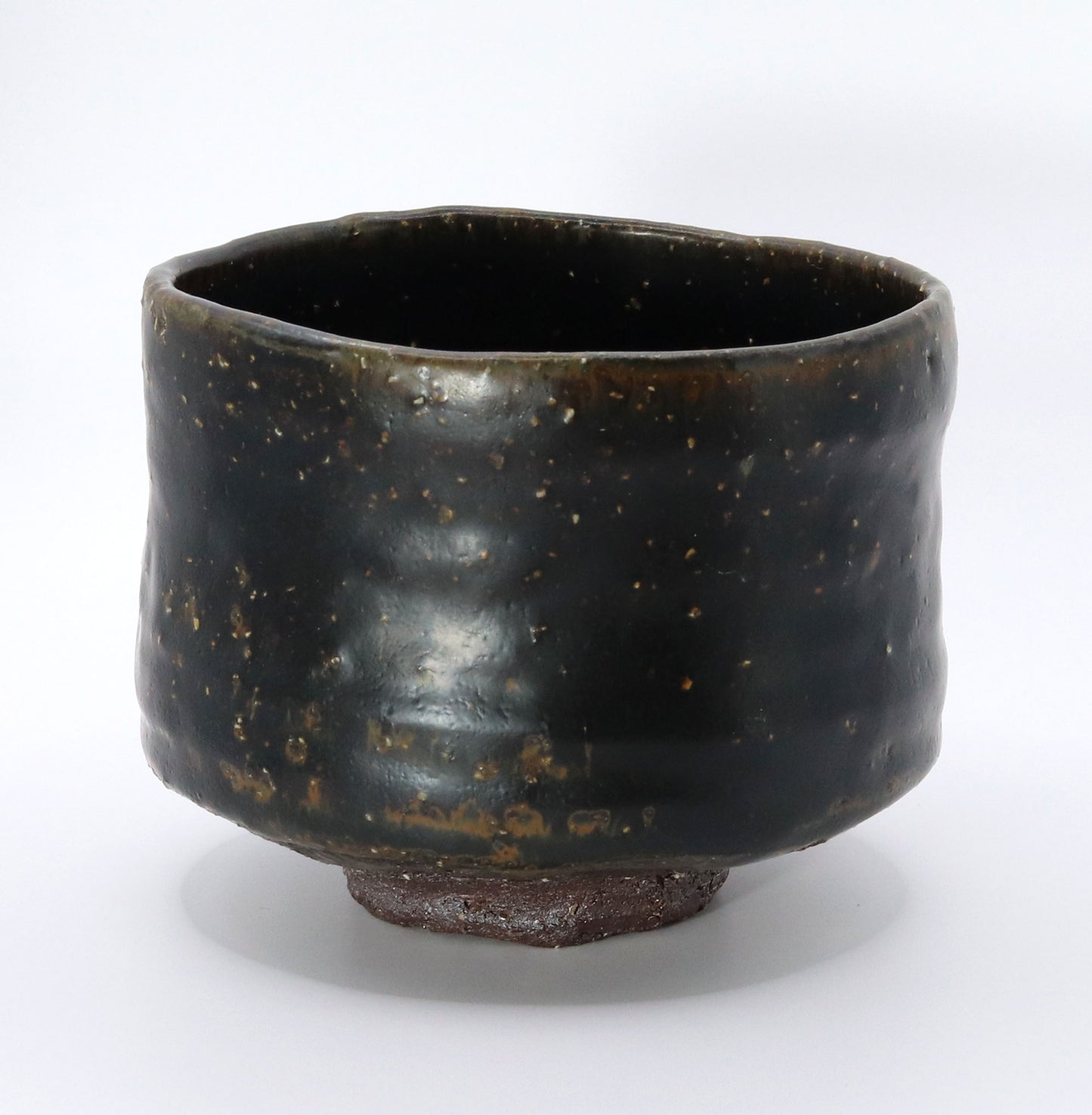
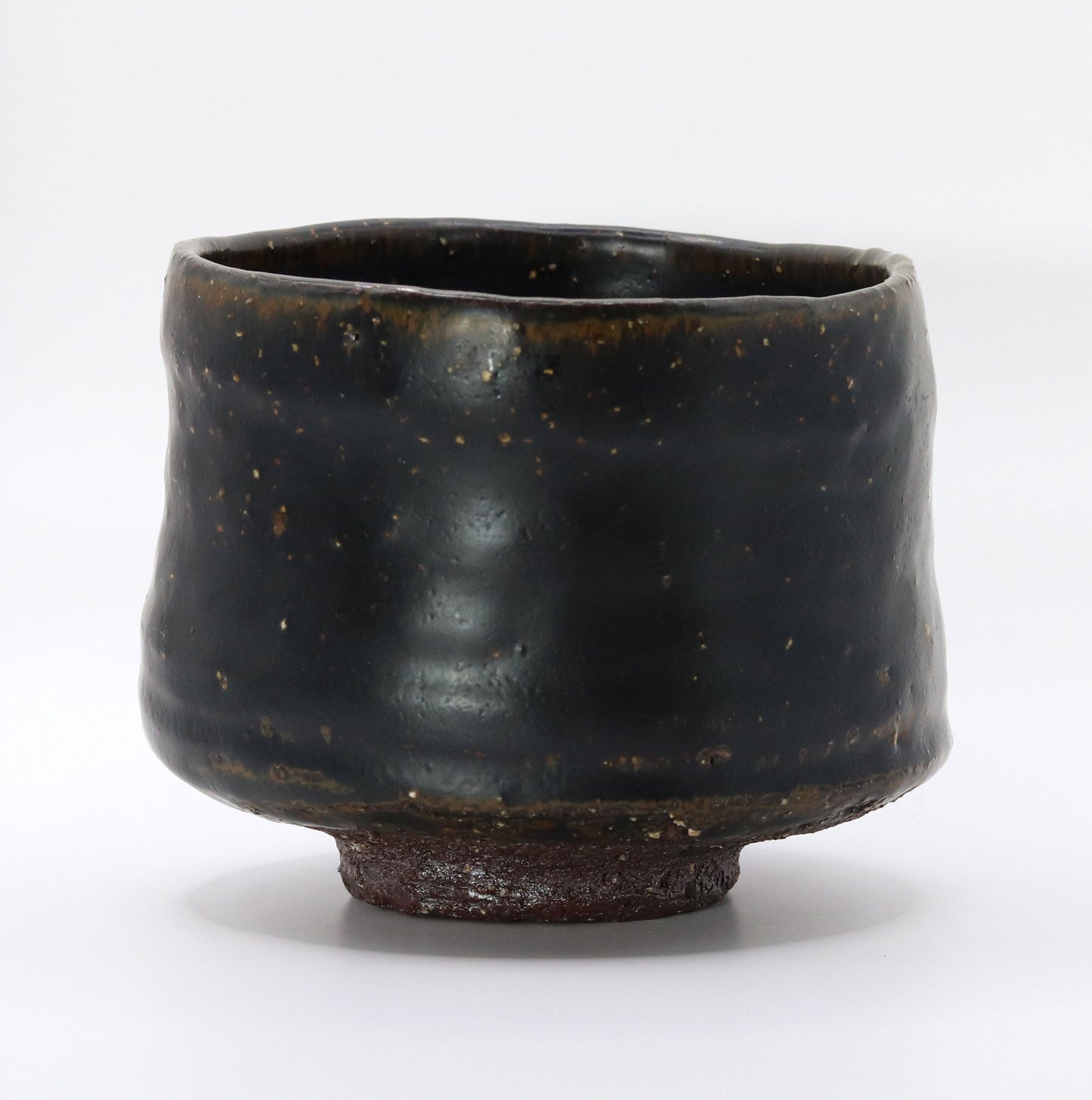
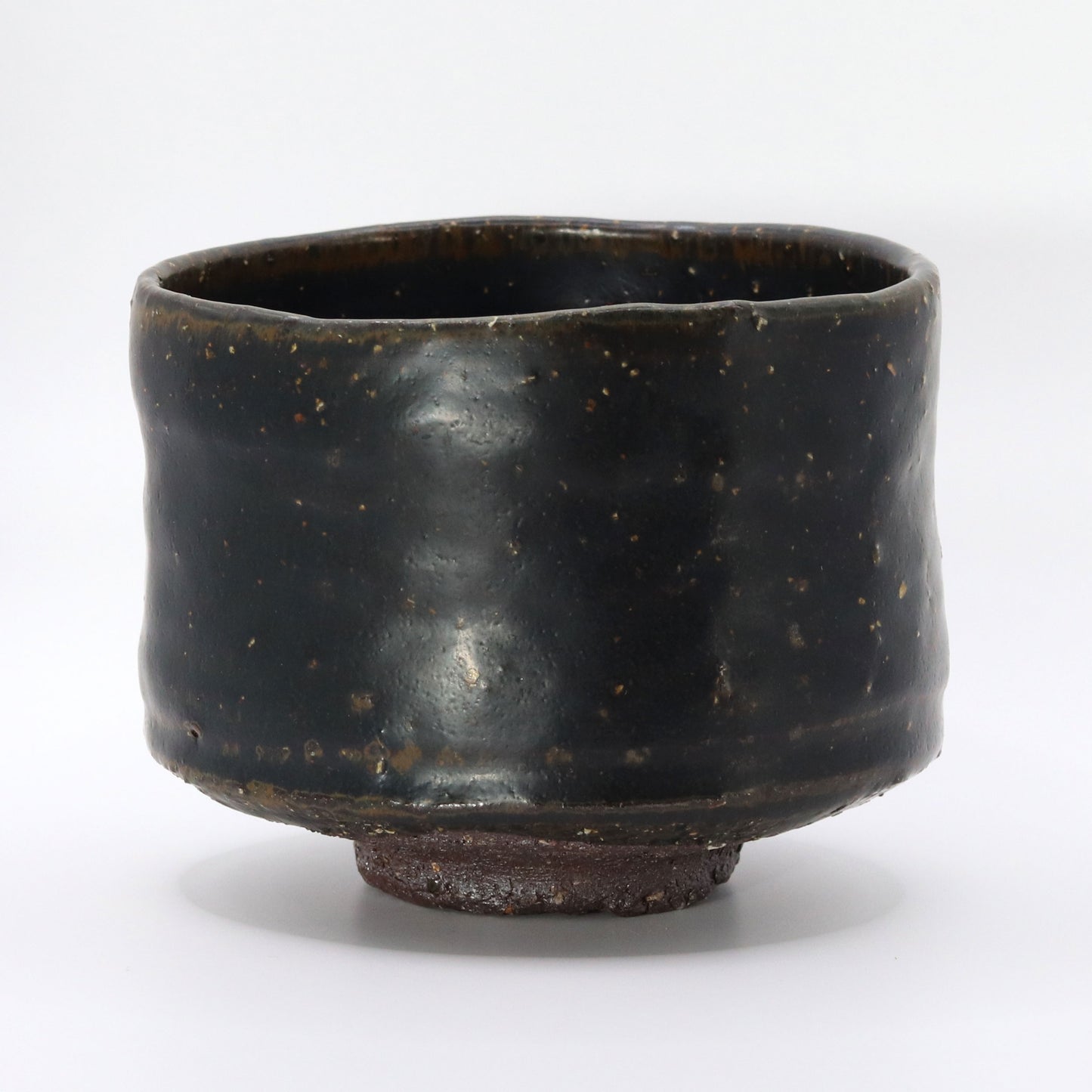
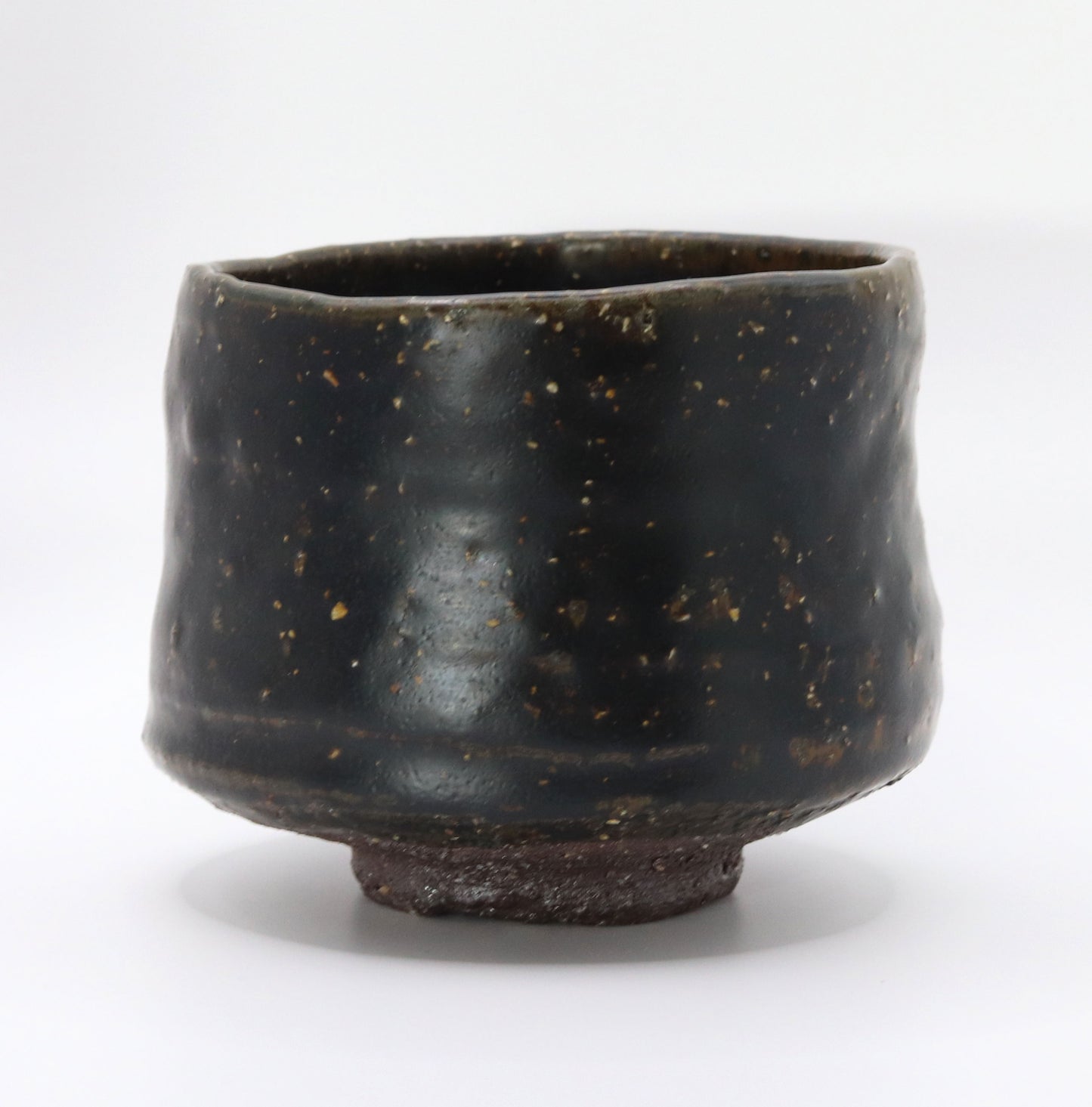

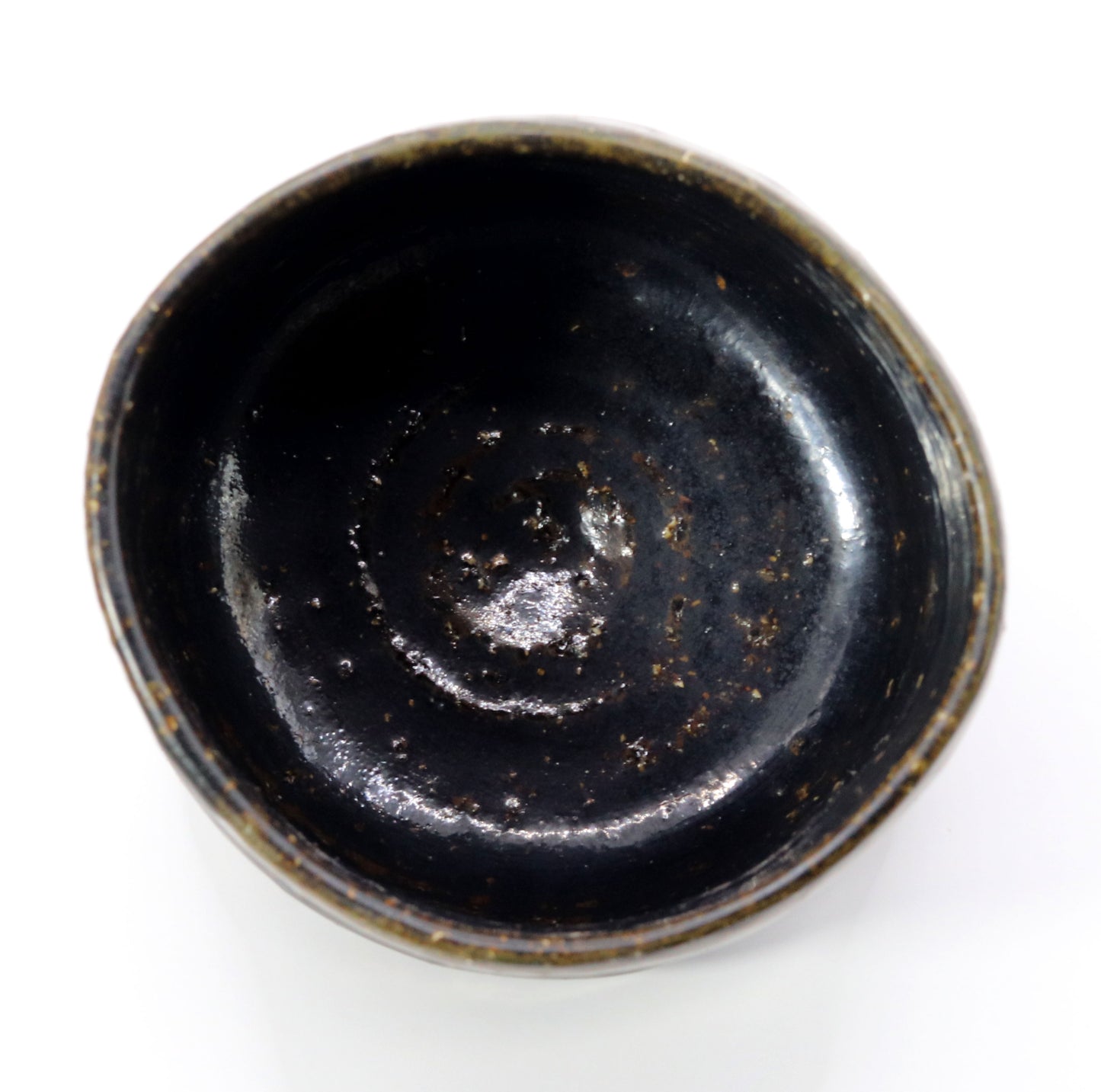
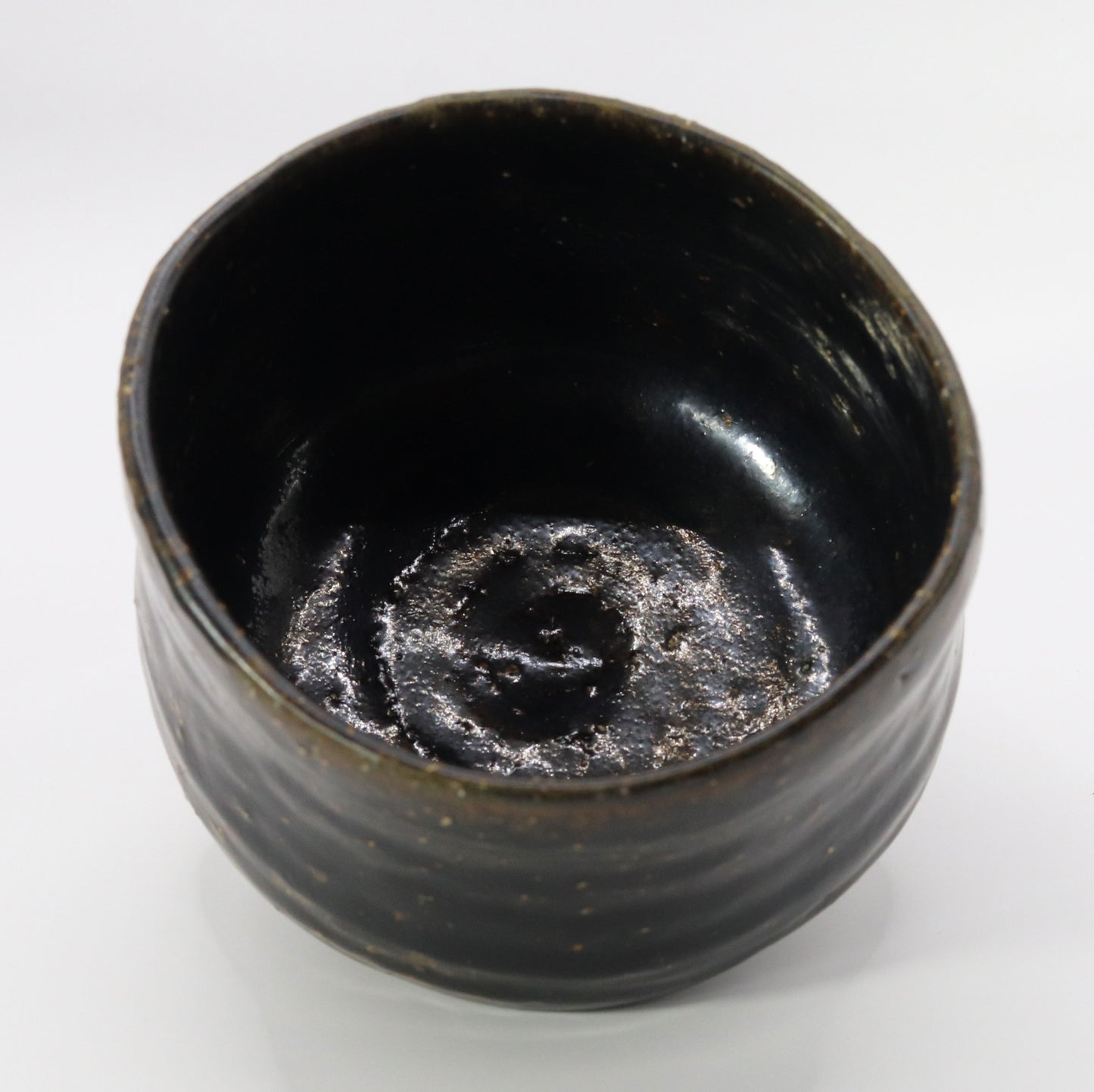
Multi-Column
-
[I will send it to you quickly and carefully]
We carefully package each product in a way that suits it best.
Also, delivery times vary depending on the piece (vessel, etc.).
Items that already come with a box will be shipped within 1-3 days of the order date.
For items that require a box to be made after your order, it will take approximately 30 days for production to be completed and then shipped.
In either case, once we have confirmed your order, we will contact you by email to inform you of the delivery date.
-
[Requests when purchasing pottery]
Even products that look the same may differ slightly in color, shape, size, etc.
The way the glaze is used, the power of the kiln, the firing method, the season, and the humidity also affect the appearance of the pottery.
Please understand the individuality of each piece of pottery and enjoy the unique warmth of handmade.

